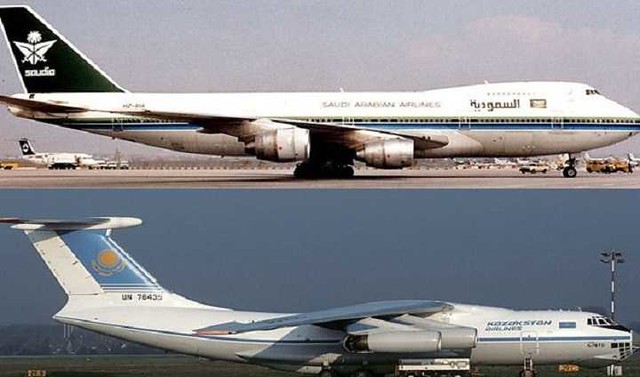12-11-96: A Saudi Airlines plane Boeing 747-100B crashed into a Kazakhstan Airlines plane over the village of Charkhi Dadri, India.
- Saudi Plane Route: Delhi to Dhahran.
- Kazakhstan Plane Route: Kazakhstan to Delhi.
3rd most deadly aviation accident
This aviation mishap claimed the lives of 349 people who were on board, and became the 3rd most deadly aviation accident, only behind the Tenerife airport disaster and Japan Airlines flight 123.
The plane was hit midair by another plane
Initial reports stated that the Saudi Airlines flight had just taken off from New Delhi when the Kazakhstan Airlines flight requested permission for landing. The Saudi flight, despite numerous warnings by the air traffic controller collided with the descending Kazakhstan Airlines flight.
Saudi Airlines plane was hit midair by the other plane on the wing. This resulted in great damage to both planes.
Both the planes lost control and went into a rapid spiral of free fall to the ground with fire trailing from the wings. The Saudi Arabian plane reportedly broke up in midair and hit the ground at a speed of 705 mph.
349 people passed away
The Kazakhstan Airlines plane was intact in the air and crashed into a field nearby. Rescue operations were soon underway and 4 critically injured passengers were evacuated from the wreckage.
These passengers, unfortunately, died soon due to internal injuries and in the end, all 312 people aboard the Saudi flight and the 37 people aboard the Kazakhstan flight were killed.
The failure of Kazakhstan Airlines
The ultimate cause of the accident was deemed to be the failure of Kazakhstan Airlines to properly navigate and communicate with the control tower.
The pilot on board did try to ascend 15000 feet to avoid the plane crash but was not successfully able to do so.
This disaster was also the subject of an episode in the documentary series Mayday (Air Crash Investigation) which aired on 2nd March 2009.
For the latest updates, you can join our ✅WhatsApp group, ☑️ Telegram Channel, or ✅WhatsApp Channel.
Never pay the full price🏷️; join the 📢Saudi Coupon Codes group and get sales updates and discount codes in one place.







